Th
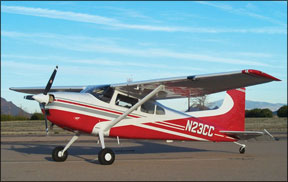
working airplane or two in their model lineups, but Cessna has been especially successful in the piston single realm with the 180, 185, 188 and 205/206/207, each of which has carved its own market niche.
Among that distinguished group, the Cessna 185 is perhaps unique for its reputation as the airborne version of a four-wheel-drive, three-quarter-ton pickup truck, easily able to haul heavy loads into and out of short, unimproved strips. With plenty of power and two front cabin doors, its also a prized floatplane.
History of the Line
Like most manufacturers who found success in the post-World War II GA boom, Cessnas original big sellers were tailwheel airplanes. The 185 came along in 1961, a follow-on product to the Cessna 180, which enjoyed considerable popularity. And for a taildragger in a world of trikes, the 185 held its own through 1985, the last year of production.
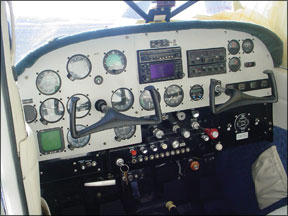
Outwardly, the 180 and 185 evolved into virtually identical-looking airplanes, with comparable overall dimensions and major parts. The primary difference, of course, is the engine. The 180 had a 230-HP Continental which was adequate but didnt elevate it to the status of a super load hauler.
When the 185 debuted in 1961, it had a 260-HP Continental IO-470F and 84-gallon fuel tanks and could perform the rather remarkable feat of lifting more than its own weight: The useful load of 1680 pounds is about 200 pounds more than its standard empty weight, something bush operators prized. Locked securely in the utility market, the 185 was spared some of the cosmetic “improvements” applied to nosewheel Cessnas. It never got the swept back tail, for example, or the rear window that was added to the nosewheel line. Unfortunately, it also never got the fuselage “bulge” applied to some of the nosewheel line, leaving the cabin a little tight at 41 inches wide.
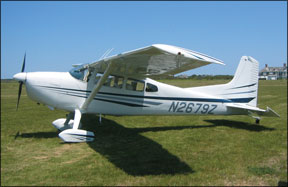
However, you could order a new 185 with Edo floats, a massive belly cargo pod that could accommodate 300 pounds or a spray application rig, to name a few options. Towing set-ups and flip-up doors for skydiving operations were also available.
Anyone who hauls stuff for a living always wants more power so in 1966, Cessna replaced the IO-470F with a 300 HP Continental IO-520D as an option. The 300-HP Skywagons are called A185s.
The bigger engine improved the 185s already exceptional performance. For a mere 10-pound increase in empty weight, the airplane received a 150-pound increase in gross, five more knots of cruise speed and some 200 feet was shaved off the takeoff ground roll, a boon for back-country operators. The engine was such a hit that it was made standard in 1967.
Also new that year was the addition of an aft baggage compartment, along with an optional stretcher door, both of which made loading bulky objects easier. From 1972 through 1979 you could order a full aerial application rig, with belly tank and spray booms. The package turned the airplane into the “AgCarryall.”
In 1973, a new cuffed leading wing profile came about. The so-called camber lift wing was created by Robertson as part of a STOL kit for the Cessna line and it reduces stall speed slightly, improving roll control at low speeds. Since its a leading edge mod, Robertson can retrofit it to earlier 185s. The cuffed leading edge is much prized among float operators.
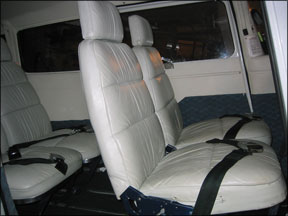
The re-winged 185 became the A185F, which is by far the most numerous flavor, accounting for more than half of all airframes. A185s as a group account for 74 percent of all 185s built.
More work-related options came along in 1975, including bubble side windows for photography and skylights. In 1976, flap-extension speed (Vfe) went from 96 to 120 knots and the fuel selector was changed to Cessnas all but idiot-proof left-right-both arrangement. Lift handles were added to the tail to give ground handlers a safe means to muscle the airplane on the ramp without damaging the stab. One change that was a mixed blessing was the reduction in usable fuel from 81 to 74 gallons, which cut into the airplanes range.
The 1979 models had a new wet wing fuel system with 88 gallons, 84 of which is usable. The older bladder-style tanks were optional. While the bladders had less potential for leakage, they had other problems, as we’ll note in the maintenance section.
The original Skywagon had a two-blade prop; with the three-blade version surfacing as an option in 1978 and becoming standard in 1980. The three-blade can be retrofitted. Owners report no cruise speed loss. It also reduces vibration and noise and climb is said to be better.
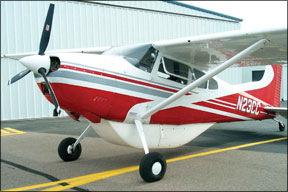
The 185 enjoyed brisk if not spectacular production numbers until 1981, when only 389 were built. By 1984 and 1985, only 34 Skywagons were made as prices shot up and the Big Slump steamrolled sales to a standstill. That the average equipped price of a new 185 nearly doubled, from $55,670 in 1979 to $108,090 in 1985 probably didnt help.
Performance, Handling
Given the performance of retracts equipped with the IO-520, the Skywagon wont set any speed records, but few of them will do what the 185 can: Fly with full tanks, full seats and baggage. Load a Skywagon with full fuel, four 220-pound people and perhaps 50 pounds of bags and the airplane will take off in just over 800 feet, climb at better than 1000 FPM and then fly 800 miles at 140 knots, outdistancing a handful of retracts and twins. Even at higher altitudes, the IO-520 has plenty left.
Fuel flows range around 14.5 GPH, rich of peak, depending on power setting. Installing GAMIjectors and operating lean of peak will pay for itself with fuel savings and engine longevity with only a moderate loss of cruise speed. We always wondered why Cessna never hung a turbocharger on the 185, as it would seem to have made a great deal of sense for the mountain operators. Tornado Alley Turbos will turbonormalize your 185 and owners report cruise speeds of 165-175 knots at FL200 while burning 14.5 GPH.
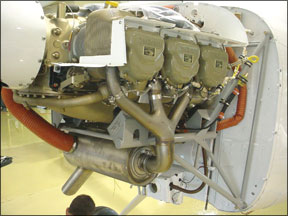
In stock form, the 185 is nearly a STOL airplane. With those big barn door flaps at 40 degrees, stall speed is under 45 knots so 55-knot approach speeds are doable. Weve been told of skilled bush pilots plunking the Skywagon down in as little as 300 feet in a rough clearing or river sandbar.
As with any airplane, the technique is a high-alpha approach with flaps and power at a speed between 50 and 55 knots, followed by a full-stall three-pointer. Watch the aggressive braking, however, since the airplane can and will nose over with locked wheels.
Although the airplane handles we’ll in the air, some owners say its not easy to land and wont tolerate lazy feet on the rudder, especially in crosswinds and the accident reports confirm the assessment. Yet as taildraggers go, its not overly twitchy and the deck angle allows seeing over the nose so S-turns arent necessary.
Wheel landings, while doable, require some finesse due to the 185s spring-steel landing gear legs. If the pilot doesnt convert a botched wheelie into a three-pointer, loss of control may follow. Most owners seem to prefer three pointers, which are aided and abetted by the locking tailwheel, which also helps in crosswinds. Just don’t forget to unlock it before taxi turning, otherwise you risk tire damage.
In the air, handling of a Skywagon is similar to another Cessna product, the Skylane. Trim, unlike that on most Cessnas, is through a jackscrew in the tail rather than via a trim tab and the systems low gearing means you move the wheel a bit before noticing the effect.
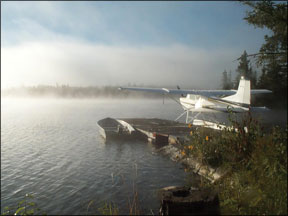
Cessna didnt offer electric trim, but some autopilot installations include it and pilots who have it like it better than the manual system. Cessna never offered electric flaps in the 185, either, a real blessing in our view. Manual flaps are simply superior for ease of use get them down or up quickly with no question of flap position. Theyre also more maintenance reliable.
Like most Cessnas, the 185 is susceptible to a trim-induced stall on a full-flap go-around. If the nose-up moment isn’t dealt with via forward yoke and trim, the airplanes angle of attack will exceed the stall value. Its better to apply partial power, arrest the sink, then go to 20 degrees of flaps before applying full climb power and retracting the rest of the flaps.
A 185 can haul just about anything you can get into it. But the cabin volume is not all that great compared to a Cherokee Six or Cessna 206. There is no way that anything large will go through the 18 by 20 inch baggage door or the two cabin doors of a 185. On the other hand, the right front door can be removed easily (a mod allows flight with the door off), as can the back seat, but that still doesnt leave much maneuvering room in the cabin for large objects.
The optional fiberglass belly pod is 9 feet long and 14 inches deep and while huge objects still cant be loaded, the pod is ideal for awkward cargo such as chainsaws, tool, skis and fishing gear (not to mention the smelly fish).
Interior, Maintenance
Cessna interior photos show six seats and the airplane was billed as a six-placer. As is typical of such marketing claims, thats a gross exaggeration. Calling the third row “seating” is generous, except perhaps for a child. The seat is limited to 120 pounds and most owners leave it in the hangar, opening more space for baggage.
An option on later 185s was a pair of articulating seats for the front row, with adjustable height and reclining seat backs. The back on the rear seat was split and it too could recline. The seating position is quite upright, with good head and legroom but not generous shoulder room in a cabin measuring 41 inches in width.
Cessna singles have a reputation for being maintainable as we’ll as durable. Thats the 185 in spades. Its a derivative airplane, being based on the 180, which was, in turn, a bigger version of the 170. Therefore, Cessna got the flaws hammered out in what was a good airplane from the beginning. Owners tell us to watch these trouble spots: Tailwheel shimmy can be caused by wear of the bolt that holds the fork to the tailwheel spring. Airplanes with McCauley wheels and brakes arent as desirable as those with Clevelands, which can be retrofitted.
Mufflers tend to crack after a few hundred hours so inspect them carefully. Airplanes built before 1981 had trouble with the trim because in cruise, the jackscrew needs 300 foot-pounds of torque to move. This stresses roll pins connecting the trim wheel to the chain drive sprocket. If the pins shear, the trim is stuck. Later airplanes replaced the pins with rivets.
Cessna offered shoulder harnesses as options for all seats in all of its singles after World War II, however, safety didnt sell until the early 80s and no one ordered them. The good news is that it means retrofitting them is easy; the hard points are under the headliner. From a safety standpoint, especially given the high rate of landing accidents and head injuries to occupants, for the 185, its a retrofit we strongly recommend.
As Continental engines go, the O-470 and O-520 series have delivered decent service. In many models, the engine installation is at the root of short engine life but that doesnt seem to be the case in the 185. It has a roomy cowl and large cowl flaps, so overheating isn’t an issue. Advertised TBO is 1700 hours, which is realistic if the owner is prepared to do a mid-time top overhaul. If the top isn’t needed, consider it gravy.
Give Cessna credit for one thing: It has delivered on parts and support, even in the lean years when no piston production was alive. If flown often and worked hard, expect to replace landing gear boxes now and again, plus tailwheel parts.
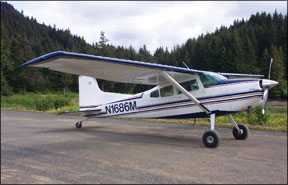
The Skywagon is a typical Cessna single, so there are plenty of mechanics around qualified to examine one for pre-purchase and to maintain it afterwards. Of particular note, however, is the possibility of corrosion if the airplane has ever been on floats, as many 185s have. Check the logs for this history. Like any corrosion, it can be expensive to repair and its likely to be there in some form on any aircraft operated on salt water.
Mods, Clubs
Being a bush and utility favorite, lots of mods are available for the Cessna 185, some of them also found on other Cessna singles. STOL kits are available from Horton www.hortonstolcraft.com and Sierra www.sijet.com. We have received complaints from owners on STOL kits on the 185 in which the ailerons are drooped with full flaps regarding loss of roll control during crosswind landings, possibly due to misrigging, causing a lack of up aileron deflection.
Because VGs do essentially the same as a STOL kit without the weight, we would suggest a VG kit from Micro Aerodynamics www.microaero.com, although a number of owners have installed both STOL kits and VGs. Engine and prop upgrades including the IO-550 from Davis Aviation Services (formerly Bonaire) www.davisaviationservices.com (very positive feedback from owners on the IO-550 mod on the 185) and long-range fuel tanks can be bought from Flint Aero www.flintaero.com.
From Tornado Alley Turbo www.taturbo.com, a turbo normalizing system will allow the 185 to operate in the flight levels. For 185s that do not have the retractable handles on the tailcone forward of the horizontal stabilizer, BAS handles www.basinc-aeromod.com, will go a long way toward protecting the vertical and horizontal stabilizers and their spars and ribs from damage during ground handling.
Prospective purchasers should join two organizations: The Cessna Pilots Association is worthwhile for anyone who owns or regularly flies Cessnas and the International 180/185 Club.
The latter is more focused on the 185 than the CPA and is worth the modest cost of dues, in our view, Cessna Pilots Association is at www.cessna.org. The International 180/185 Club is at www.skywagons.org.
Owner Feedback
We purchased our 1971 A185E in May of 2001 with 2600 hours on the airframe after a considerable time deciding on the exact airplane we would need. Happily, the 185 was on top of the list. We divide our time between Alaska and Nevada, flying the airplane back and forth, to include using it as a daily driver, commuting to and from the bush while in Alaska.
The operating costs after almost 700 hours of ownership have been minimal. Owner-assisted annuals have been $250 to $400. Other than a set of plugs, a landing light replacement, a battery, two 500-hour magneto checks, right brake O-ring replacement, replacement of a chafed alternator output wire and a time-recommended prop IRAN, nothing else mechanical to include ADs has been required. The simplicity of the airplane pays off with a minimum of required maintenance.
We added GAMIjectors from day one, a landing light flasher, a Pponk gear beef-up kit, a 10-inch tail wheel, a WingX STOL kit and Micro Aero VGs. The GAMIs and VGs have been the best modifications we have made to the airplane. The GAMIs, 12 GPH (LOP), have saved us 1400 to 1500 gallons to date, which is truly significant at todays fuel prices. The VGs and WingX STOL kit have enhanced short field operations, with the most notable enhancement being the increased elevator authority due to the VGs on the horizontal stabilizer.
Insurance has been 1.68 percent of hull value. We consider this to be very reasonable considering the airplanes use and the fact its a tail dragger.
Flying it has been a joy. We operate it out of a 1400-foot long gravel strip at 5400-feet MSL in the mountains, where the VGs and WingX STOL kit improve the performance and safety. Its also a decent cross-country airplane, considering its short field performance capabilities, with a useful load of almost 1700 pounds. Range is 6:30 hours at 135 to 140 knots, thanks to the 84-gallon, long-range tanks and the GAMIs 30-minute contribution to the range. For our needs, the 185 is a perfect fit.
Manny Puerta
Via e-mail
I have owned a 1963 Cessna 185C since 1989. In my opinion, the C-185 deserves every bit of its reputation for being a workhorse. It can haul whatever you can stuff into it, and you can easily get it into and out of the very tightest of unimproved strips.
My 185 has an IO-520D and a ton of upgrades. A few years ago, I got a serious case of the “need for more speed” so I installed a Snyder speed kit, wheel pants, and I cleaned up the airframe by removing the amphibian hoist eyes and moving the tail fin beacon to the tail cone. Prior to the modifications, my typical true air speed at 7500 feet was about 138 knots. Now I get about 153 knots at the same power setting and my fuel burn is 15.5 GPH, running 75 degrees rich of peak. I installed an EDM-700 and GAMIjectors when I did the speed mods and, when I get brave enough, I may try cruising lean of peak.
I replaced the engine with a factory reman at the same time I did the speed mods, but I don’t think that made the difference in cruise speed because I am running the same power settings as before. One other contributor could be the new engine mount I installed. The manufacturer of the new mount claims that owners have seen significant increases in speed due to regaining centerline thrust, but I don’t think it had much of an influence in my case because my Lord mounts were new when I replaced the mount.
One problem I had with my 185 that took 15 years to solve is an engine vibration. The 1963 185C was offered from Cessna with a 260-HP IO-470-F. However, when I purchased mine, it had a 300-HP IO-520-D that was installed aftermarket via an STC. My airplane, with the IO-520-D, had a terrible vibration which lived through several engine overhauls. I tried everything I could think of to solve this over the years, including propeller static balancing, dynamic balancing, engine mount x-ray inspection for cracks and replacement of the rubber Lord mounts. Nothing helped and, in addition to the aggravation of the vibration, I was going through gyro instruments like they were consumables. Finally, through the 185 club, I read that Cessna modified the engine mount on the later year 185s to address this issue. At the same time, I discovered that Seaplane West Inc. in Alberta, Canada, makes an engineered mount that is even more robust than the later model Cessna mount.
So, at my last engine replacement I opted for the Seaplanes West mount. It wasnt cheap but it did the trick. No more vibration. I really cannot say enough about this modification in terms of the performance, and I should also note that I found the people at Seaplanes West to be great to work with.
I have a Garmin GNS430 and an S-TEC System 30 autopilot with roll steering. My annual insurance premium is $2372 for $1 million liability and $160,000 hull. I don’t know what my 185 is worth on the open market, but with a new engine, new paint and interior, extended range fuel tanks and top-of-the line IFR avionics, the insurance company said $160,000 was reasonable replacement value.
After owning my 185 for almost 18 years I should know what the operating cost is, but I don’t I just keep spending money on it. Last years restoration cost over $110,000 but there isn’t much on the airplane that isn’t new at this point.
Probably the best part of owning a 185 is that it is fun to fly. I have hundreds of hours in Cessna 182s and I found that after a while I could set up an approach and almost let the airplane land itself. Not so with the 185. This taildragger always demands your full attention during both landing and take off, and taxi for that matter.
I have we’ll over 2000 hours in 185s and I still have to remind myself to stay ahead of the airplane, all of the time. It should go without saying that the fun part of all of this is mastering the challenge, on every flight. The other fun part is being able to operate out of backyard, unimproved dirt strips. All in all, the 185 is pretty special a great hauler, fast and versatile.
Jack Ronalter
Via e-mail
Im one of the few 185 pilots who has not had to compromise on the purchase of a 185, or in my case two 185s. In 1980, I pounded the doors of the local Cessna showrooms, but to no avail. All of the airplanes at the dealers were accessorized differently than my preference. The salesman suggested I sign up for a 185 currently coming down the production line and I could add options as I saw fit.
I choose a good share of the optional items and also had the factory add to the list lower door windows, bubble windows and a much appreciated cargo pod. Although I owned a Super Cub prior to this 185 purchase, I begged the assistance of two cropdusters to show me how to land this new factory purchase enroute to Oregon from the factory.
Today, coupled with a Sportsman leading edge Ive progressed to landing on a dime and with 300 HP, the airplane climbs effectively for safe departures from remote, high-altitude back country strips.
I liked the idea of a 185 amphib and found a 1979 model in a basket in the hands of Cliff Guse, a skilled restorer in Roseburg, Oregon. We agreed to a price, signed a contract and both.
N185RX and N158RX are painted identically, which leads to confusion by controllers from time to time. After hangaring the wheel plane one day, I taxied out in the float plane with an associated comment from the controller that it didnt take long to change from wheels to floats.
Belonging to the 180-185 club gives you access to a great network of information and a wonderful group of pilots who enjoy their airplanes in back country remote areas. You can count on fly-ins virtually any time, any weekend, from spring through fall. Insurance is also relatively favorable through the club affiliation with Bill White Insurance, although floatplane insurance is pricey. I would share those numbers with you but my wife might see them. Yes, Im in the RX business.
John Hirons
Via e-mail


